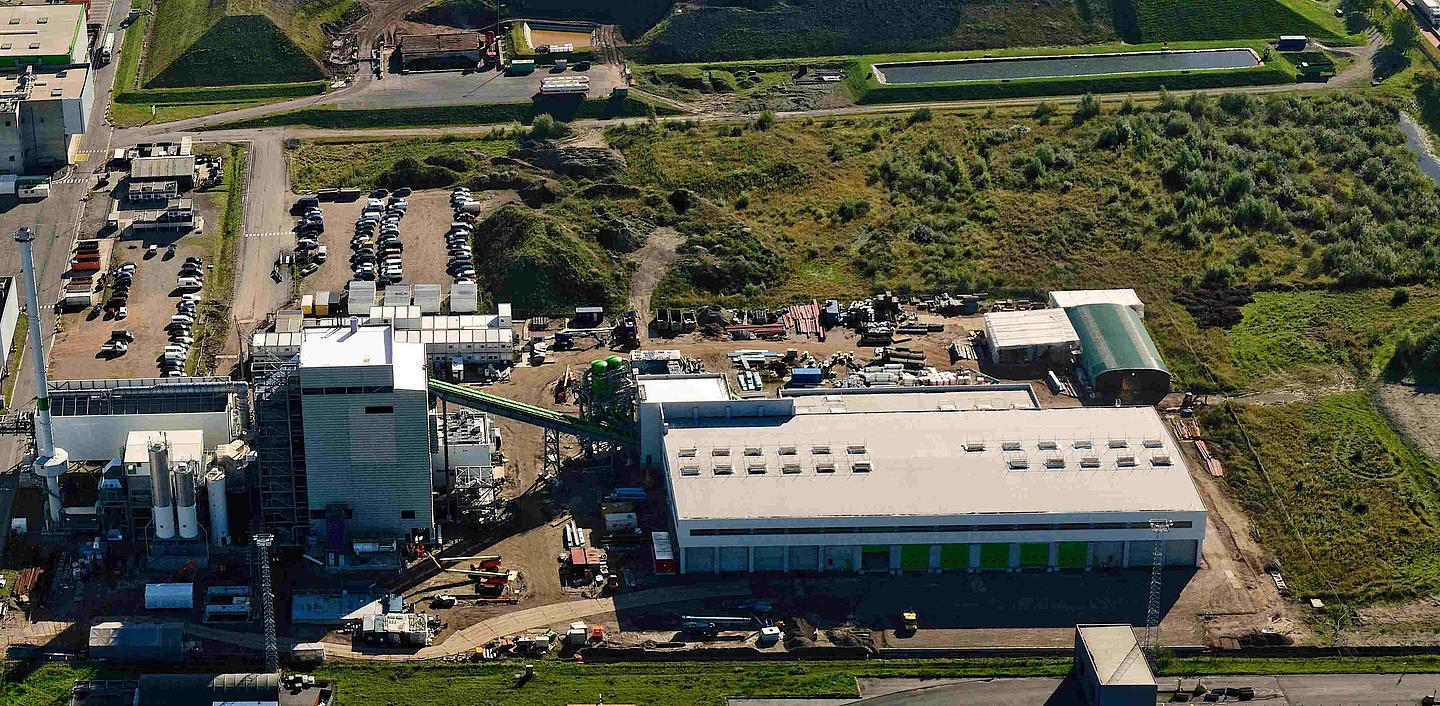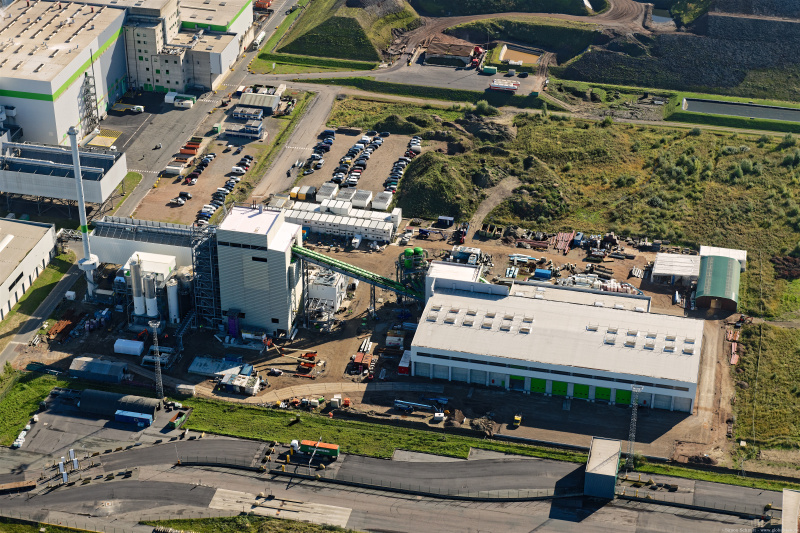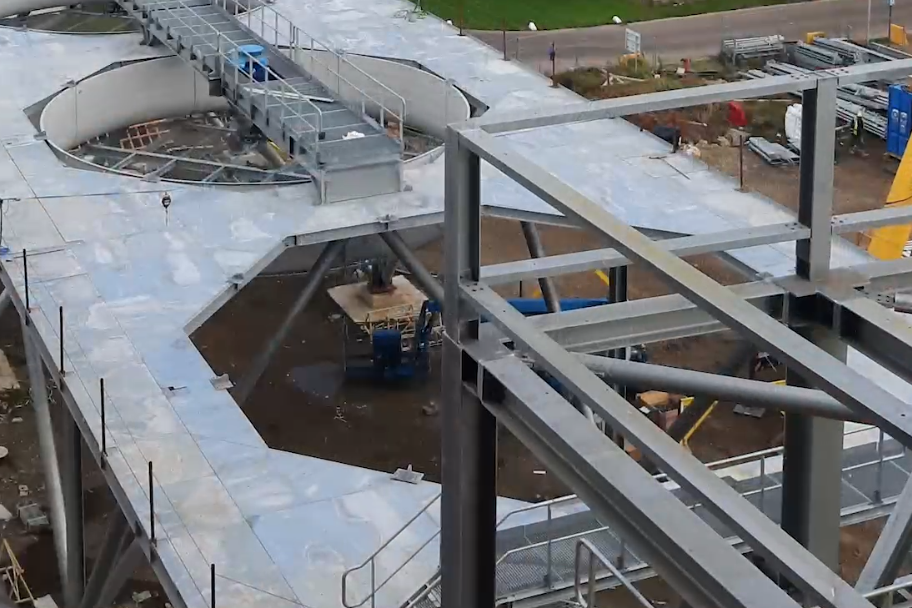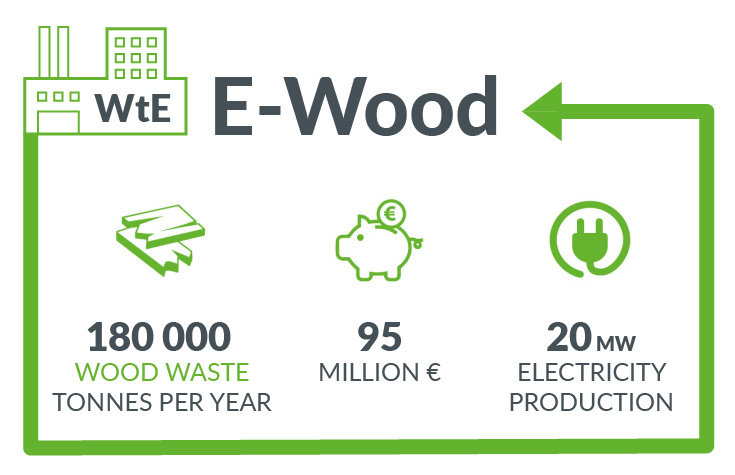E-Wood
On the Indaver site in Doel, Veolia and Indaver built an innovative waste-to-energy facility that converts wood waste into energy. The “e” in E-Wood stands for energy, in the form of green energy and high-pressure steam. “Wood” stands for wood waste that can’t be recycled, but can be used as a green fuel.
E-Wood can treat 150,000 to 180,000 tonnes of uncontaminated treated wood waste per year, whereby green energy is generated. It supplies electricity to the grid and, if requested, steam to the surrounding port businesses. By using this wood waste as a raw material for the production of green energy, this facility fits in with Flanders’ sustainability goals.

Highlights

Update: New E-wood power station commissioned
On Thursday 1 December the new E-wood power station was commissioned. The commissioning was approved by AIB Vinçotte. E-Wood will convert approximately 180,000 tons of non-recyclable wood waste into energy every year. The…

E-Wood timelapse of the construction site December 2021
Watch the new timelapse of the construction.

Key figures
The new treatment facility has the capacity to incinerate approximately 180,000 tonnes of wood waste per year. Primarily construction and demolition waste, but also wood waste from container parks and the industry.
Partners
Veolia and Indaver both have the expertise required to build a wood waste facility. In 2020, Veolia and Indaver entered into a strategic partnership for the development and operation of E-Wood. Together, the two companies will invest 95 million euros in the new waste-to-energy plant in a 50/50 partnership.
In 2006 Veolia and Indaver founded the joint venture SLECO for the management and operation of the three fluidized bed incinerators and turbines on the same site in Doel. With the new E-Wood plant, the partners are strengthening their partnership in the Waasland Port.
